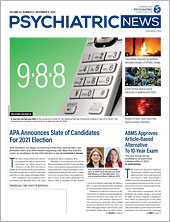Exposure to endocrine-disrupting chemicals during adolescence may increase the risk of behaviors associated with attention-deficit/hyperactivity disorder (ADHD), a study in JAMA Network Open suggests. These chemicals, such as bisphenols, parabens, and phthalates, are found in food packaging, cosmetics, and other consumer products and are thought to interfere with the body’s hormones.
“ADHD is the most common behavioral disorder of childhood and can have substantial associated morbidity in health and function. If it turns out that adolescent exposure to endocrine-disrupting chemicals contributes to ADHD behaviors, and exposure could be altered, that could be a valuable public health measure,” said senior author Susan A. Korrick, M.D., an assistant professor in the Department of Environmental Health at the Harvard T.H. Chan School of Public Health and the Department of Medicine at Harvard Medical School. She is also an associate physician at Brigham and Women’s Hospital.
Korrick and colleagues analyzed data amassed from the New Bedford Cohort between June 2011 and June 2014. The New Bedford Cohort is a cohort of mother-infant pairs who were recruited after delivery between 1993 and 1998 and who continue to provide information to researchers. In the current study, Korrick and colleagues analyzed urine samples for concentrations of endocrine-disrupting chemicals or their metabolites in 205 adolescents with an average age of 15.3 years. The adolescents, their parents, and their teachers completed behavioral checklists about the adolescents drawn from the Conners Attention Deficit Scale and the Behavior Assessment System for Children, Second Edition. Among the adolescents, 40% had scores on at least one behavioral checklist that suggested a significant behavioral problem, and 19% had an ADHD diagnosis either in their pediatric medical records or reported by their parents.
The strongest and most consistent associations were seen for antiandrogenic phthalates. For each twofold increase in antiandrogenic phthalate concentrations, adolescents had a 1.34 increase in the risk of significant behavior problems related to ADHD, a 1.26 increase in risk for attention problems, and a 1.4 increase in risk for hyperactivity problems. For each twofold increase in dichlorophenols, adolescents had a 1.15 increase in the risk of significant behavior problems related to ADHD, a 1.05 increase in risk for attention problems, and a 1.22 increase in hyperactivity problems.
The associations tended to be stronger for boys than for girls. Although the study was not designed to determine why, Korrick noted that the results are in line with prior research about exposure to other developmental toxicants in other age groups.
“Sex differences in the impact of endocrine-disrupting chemicals on behavior have been seen in other studies, including our own, especially with prenatal exposure. For example, in previous research on the New Bedford Cohort children at age 8 years, boys’ performance on some psychometric tests was more adversely impacted than girls’ after prenatal exposure to methylmercury or polychlorinated biphenyls,” Korrick told Psychiatric News.
“Another factor that may contribute to boy-girl differences is that ADHD symptoms are more common in boys,” Korrick added. “Boys potentially have a wider range of symptoms than girls, which can sometimes mean it’s easier to detect an association between exposure and behavioral symptoms.”
Korrick noted one caveat to the results. “This was a cross-sectional study, so we can’t say with certainty whether exposure altered behavior or behavior altered exposure. We tried to account for this issue by adjusting our statistical models with information about lifestyle or behaviors that could increase exposure risk,” she said. “The results were unchanged after these adjustments, which supports the potential for exposure to change behavior rather than the reverse. But, bottom line, we can’t be certain of the direction of association in a cross-sectional analysis.”
This study was supported by the U.S. Environmental Protection Agency and the National Institute of Environmental Health Sciences. ■
“Association of Exposure to Endocrine-Disrupting Chemicals During Adolescence With Attention-Deficit/Hyperactivity Disorder–Related Behaviors” is posted
here.

